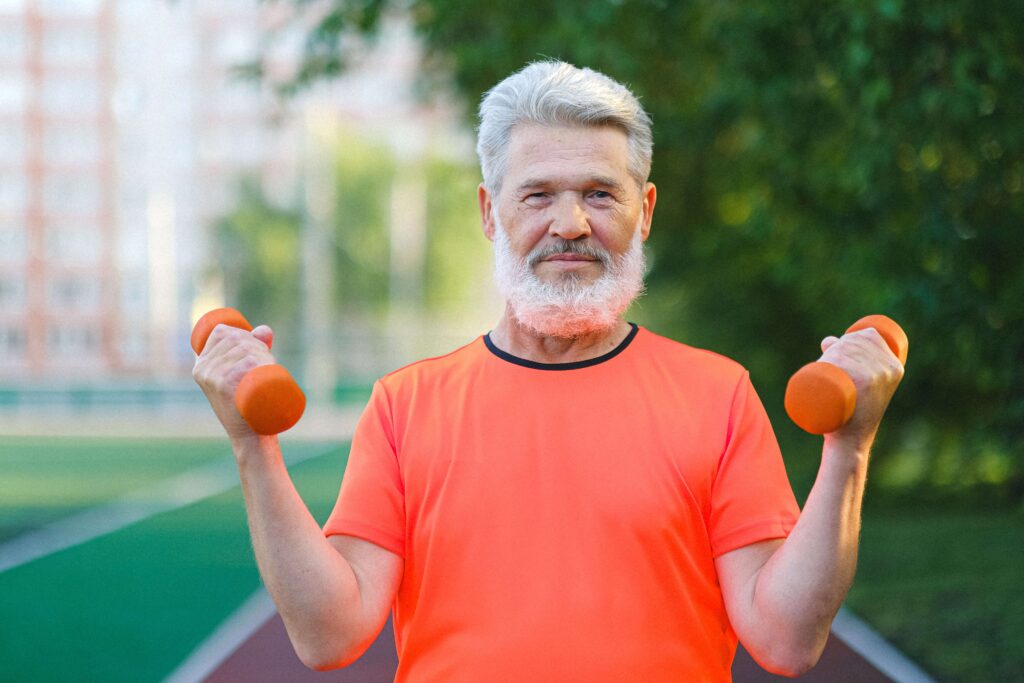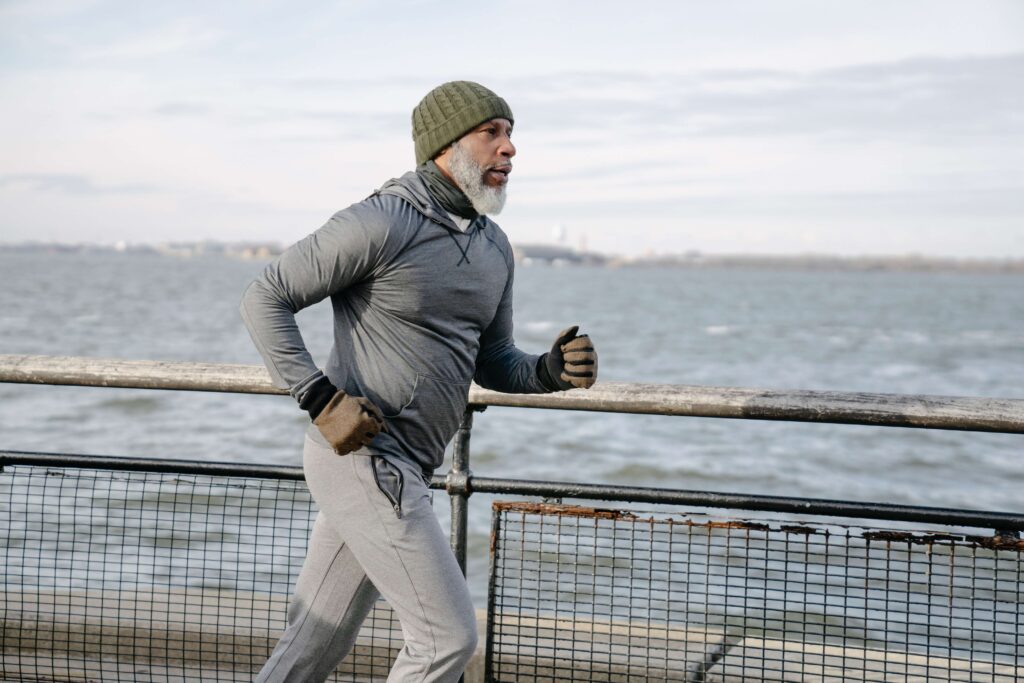When it comes to training elderly clients, you have to consider their individual needs and capabilities. And if there was ever a time when you couldn’t apply a one size fits all approach, it’s when you’re working with older clients who may have medical conditions.
Remember: caution, research, and empathy are essential when training those that are more vulnerable to injuries. It’s also critical that you explain everything to your older clients and have them sign a personal trainer liability waiver for your own protection.
But that’s not all you need to consider. In this article, we’ll delve deep into 12 different things that you should keep in mind when working with senior clients, and also give you some tips on how personal trainers can effectively work with the elderly.
1. Build Rapport
Building rapport with the people you train can create a safe environment, essentially allowing you to understand the limits of your client. Staying within those safe limits is only possible when an appropriate relationship has been established for the trainee to freely express themselves.
It’s critical for personal training and fitness professionals to pay attention to this because they are responsible for helping their clients reach their health and fitness goals. Additionally, they have to help prevent injuries whenever possible by maintaining a strict focus on the routines older adults follow.
2. Be aware of your client’s medical conditions
It’s critical for any successful personal trainer to first ask new clients about any underlying conditions they may have. But when you’re training older clients, this is even more important.
Any underlying health conditions, such as cardiovascular disease, heart disease, diabetes, hypertension, etc. have to be considered when tailoring a routine accordingly. Conducting comprehensive fitness assessments before the training begins reduces potential risks.
As we age, our likelihood of developing these conditions goes up, which means that your older clients probably have some mobility limitations that will keep them from executing a fitness program. Understanding what your older adult client is dealing with will inform your decision.
You can also develop programs that address cognitive decline through Alzheimer’s or dementia and partner with health professionals to support a senior client’s overall health.
This post by RACGP gives further insight into the various medical problems older athletes and gym-goers may be actively dealing with. You may also want to connect with other professionals in the fitness industry to gain valuable insight into best standard practices.
3. Start out slow (and gain momentum)

Older clients are more fragile versions of their younger selves. Whether it is a medical condition, unhealthy lifestyle and eating habits, or a lack of regular mobility – the older one gets, the easier it could be to injure oneself.
Starting with less demanding basic movements and flexibility exercises enables you to get an idea of your client and what you’re going to have to deal with. After sufficient progress, you may consider incorporating power training or strength workouts into their regimen.
Medicine ball throws are a great place to start because they are easy enough to execute but will also pose a good degree of challenge.
Once muscle mass increases along with their overall strength, things will get easier for both parties. Proper routines can help senior clients increase their bone mineral density and prevent chronic diseases while also boosting immunity and helping them lead a healthy lifestyle.
Even if your clients are insisting on moving to high-energy routines like HIIT and metabolic workouts, help them understand that they need to start slow.
4. Create individualized routines
Individualized routines are the plan of action when training senior clients; you have to make sure that all the necessary muscle groups are being activated enough for them to grow and develop.
That’s why a cookie-cutter approach simply won’t work. You need to consider their range of motion, overall flexibility, and even exercise preferences. That way, you can move them towards their goals as quickly as possible, applying everything necessary, from sports medicine to older client care.
Reading about NASM’s Optimum Performance Training Model can help you develop a holistic and individualized training routine for your older trainees.
5. Organise community meetups
It can be a fulfilling experience for older adults to train with others. It can help them boost socialiZation and reduce self-consciousness as they watch their peers go through the same struggles.
Consider training older clients in a group to facilitate this sense of community. Additionally, this also makes it easier for you to supervise your clients because they can give each other valuable feedback, learn and improve.
You should also look for existing communities of senior clients so you don’t have to start yours from scratch.
6. Try Yoga

Seasoned personal trainers know that yoga isn’t restricted to a particular class of clients. It is a great way to improve flexibility and mobility and can really come in handy when you’re training older clients. It may be tempting to want to recommend intense calorie-burning exercises, especially when they are trying to lose weight, but slow and steady will win the race.
Various yogic poses and stretches are not only simple but are also less demanding and can help increase one’s range of motion. Apart from mobility, flexibility, and muscular development, yoga can also assist in strengthening the bones and helping with body composition.
7. Focus on hypertrophy as much as on strength training
While strength training is imperative even when working with older adults, focusing on hypertrophy or muscle development should be given equal importance as muscle mass tends to deteriorate faster among them.
Whenever possible, consider incorporating conventional exercises such as normal push-ups, wall push-ups, mountain climbers, box jumps, and squats – for those whose knees are capable of handling it – but also hypertrophy-friendly compound movements. This not only keeps your clients engaged physically but also helps them develop muscle tissue faster.
8. Unilateral exercises are key
Unilateral exercises can help correct muscle imbalance and significantly lower the risk of injury among older adults. Lean into these when training older clients since they are often the easiest to begin with, especially when incorporating weights.
Essentially, they focus solely on one side of the body performing a movement. Single-arm exercises are great examples. A light weight can also be used when doing single-arm raises or extensions to condition the body to handle heavier weights eventually.
Consider lunges and other split-stance exercises to train the lower limbs for your senior client.
9. Include glute exercises
Focusing on the hip extensor muscles, better known as the glutes, is excellent for older adults because of the long term benefits. These muscles help support our legs as we walk or run and can help improve your client’s balance and coordination. Training glutes regularly is an effective counter to the mobility issues that develop with old age.
Focusing on these muscles can help strengthen the legs of a senior trainee and increase their mobility by adding to the muscle and bone mass. It is important to focus on attaining proper form while performing the exercises so as to not injure other muscles and get the most out of the workouts.
10. Consider ‘Interval Training’

While there is no definite answer if you’re wondering if you can incorporate interval training into the workouts of your older clients, it can be beneficial if the individual doesn’t suffer from some chronic health condition that may hinder the process.
When done right, interval training is extremely effective in improving one’s overall health and increasing fitness. It also helps with blood circulation, boosting metabolism, building lean muscle mass and is beneficial for the heart.
And as you know, training older clients is all about finding what works for the specific individual you’re working with. Just a couple of minor tweaks on someone’s daily routines, such as increasing the incline on a treadmill for a minute or two, followed by a normal ‘recovery’ minute of exercise, won’t cause unnecessary strain but will definitely speed up the process of building endurance.
11. Be responsible
As a trainer, it is your job to be careful and regulate the performance of your client’s physical activities. Spotters can also help senior trainees throughout their routine, thus minimizing the risk of injury with adequate monitoring.
Lastly, it’s important to remember that you can’t handle your older client in the same way you do with younger ones. The responsibility is larger because you need to pay closer attention to how they move, the exercises they do, and even their overall habits after the training.
12. Create varying routines
Instead of creating and making your clients adhere to a strict and monotonous routine, you can switch things up by introducing interesting new exercises.
This not only has a positive psychological effect on older trainees by keeping them on their feet with a wide variety of revolving exercises but also has a direct influence on increasing the effectiveness of a workout session. Following diverse routines ensures that all the necessary muscle groups get to be put into action adequately and not neglected.
You can incorporate exercises such as Pilates, balance exercises, cardio activities such as swimming, and stationary bike sprints within a gym setting, etc. This adds variety to the workout program while also helping the case stated above.
Conclusion
As we learned in this article, you must do whatever it takes to ensure the safety of your senior trainees. Avoiding extreme exercises and heavy workouts, doing a comprehensive physical assessment to determine the best routine so as to cater to an individual’s needs, as well as providing motivation and praising them for all achievements they make – no matter how small – creates a wholesome and rewarding experience for everyone involved.
Warm-ups and cool-downs are absolutely essential. Warm-ups help the muscles prepare for the strenuous regimen to follow, and a cool-down helps relax the muscles and provides relief after a session.
Remember: Your senior trainees need special and individual care for their safety and well-being. A trainer must know their client and their potential issues, build rapport with them, motivate them, and – most importantly – look out for their safety and physical growth.
